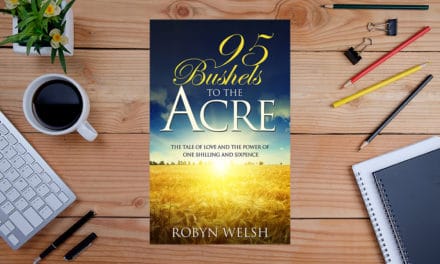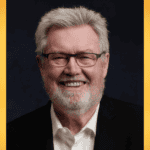Although the interview from which this article was written happened several years ago, it gives us a wonderful window into a writer’s mindset and
Best-selling writer Ken Follett has written mostly stand-alone novels. But some of his biggest sellers have been series. World Without End (discussed a lot in this article) follows The Pillars of the Earth. It too has a sequel, A Column of Fire, which was published in September 2017.
World Without End begins two hundred years after Pillars and develops the characters and their lives before plunging us into the horror of the Black Death.
“I suppose I really started with the Black Death because I needed a theme as big as building a cathedral and it took me a long time to figure out what that would be,” he says.
“In fact, one of the ideas I considered was writing a novel about building a skyscraper. That had to be set in Chicago in the 1880s and my agent pointed out, quite rightly, that I might not be quite so comfortable writing about Chicago in the 1880s as I would be in medieval England! “When eventually I thought of the Black Death I thought, first of all, it killed at least a third of the population of Europe, maybe half the population, so it’s a huge thing.
“As I looked into it, I realised it had also changed the way people thought about medicine and knowledge in general about science, philosophy and religion. So it is cataclysmic in more than one way. I could set the story in Kingsbridge 200 years after The Pillars of the Earth. So in some ways, it could be a sequel to The Pillars of the Earth. That was when I decided it was possible to write the sequel.”
Writing a sequel to a book has advantages and disadvantages. With World Without End, Follett had the benefit of research he had done for The Pillars of the Earth and knew an enormous amount about the Middle Ages already. There was extra research needed. Follett did not deal with medicine at all in The Pillars of the Earth and the later Middle Ages are different but the basic knowledge was there for him to build the rest. Planning a book of this size involved a great deal of work.
“I started from the Black Death and worked backwards and forwards,” says Ken. “I wanted this catastrophe in the middle of the book so it overturns the lives of everybody. To do that, the characters had to have rich and complicated lives in the first place.”
When plotting World Without End, Follett thought about the roles he needed and developed the stories these characters would have. Their lives naturally involved loves, hates and ambitions, and unfold in the first half of the book. “I thought we needed somebody who was a builder, for continuity. That was
Al Zuckerman—Follett’s American agent—agreed with the need for these complex layers. However, when Zuckerman saw the first draft of the World Without End outline, he wanted Follett to go further. He made some important suggestions.
“His main comment was that these people needed to be much more closely inter-related for the story to work,” said Ken.
“That’s when I made Merthin and Ralph brothers, Philemon and Gwenda brother and sister, and Godwyn and Chris Cousins. “That works wonderfully well because it meant as well as being involved in their own independent dramas, they were constantly involved in each other’s dramas as well. So every time something happens to, say, Gwenda, then Caris is concerned because she has been her best friend all her life and Philemon may be concerned because she’s his sister and so on.”
This interconnectedness is all very well, but how do you keep track of all the paths? Ken implemented a system which he’s grown to like.
“I made a spreadsheet,” he said. “I put all the characters on the spreadsheet and set it to calculate their ages throughout the book. It was very easy to use, too. When I mentioned something about each character’s physical appearance, I would copy and paste it on to the spreadsheet. For a major character, there are a couple of hundred words. Then 200 pages later, when wondering what colour hair a character had, I could look it up.”
“There are more than 200 named characters in this book. Somebody who read it said there were not many characters in the book! ‘Very clever of you not to put too many characters in,’ they said, which I took as a great compliment. It meant they hadn’t noticed.”
Ken spent a year working on the outline of the book. Much of that time involved planning the individual stories and weaving them together – not necessarily an easy or straightforward task. And he wanted the reader to be not quite sure what he was up to…
More usually the stories are more interwoven so there is a development in one person’s life and then you move to a different development with another character. Those all have to be interwoven like a braid. When reading a Ken Follett novel, it is easy to become totally immersed in the story and in the lives of the characters. In both The Pillars of the Earth and World Without End you can learn a lot about the period. Follett uses his research lightly; the reader is pulled into each colourful, terrifying scene. They almost become a bystander.
If this is what happens when you read his books, surely he must become totally immersed himself when he is writing them?
“Am I immersed when writing? I suppose I have to be,” he says, “because I have to think of the small details of people’s lives.”
Follett’s research tools include such books as Agricultural Records. It gives the price of various crops and any weather details known at the time.
“I’m not particularly interested in the weather and the crops but these people are very close to the land. Whether things were growing or not was absolutely crucial to people in that era all the time, so I felt I had to mention it.”
“We do have weather records for most of these years. Where I say what the weather is, it’s usually because it was actually like that.”
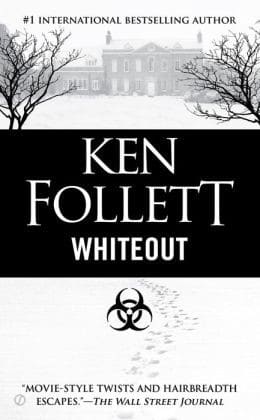
“For Whiteout, I had to find out about viruses and high security laboratories. If I had skimped that research very few of the readers would have known, but the book wouldn’t have had the credibility that came from all the stuff I found out about the bio-hazard suits they wear and how they are a bit claustrophobic, and how the air comes from a tube in the ceiling.”
Eye of the Needle was the book that started Ken on a successful writing career—and it was the first book he says he researched. He believes his earlier books were texturally thin and lacked research.
“The transition for me from my tenth unsuccessful book to Eye of the Needle was a big jump in quality,” he says.
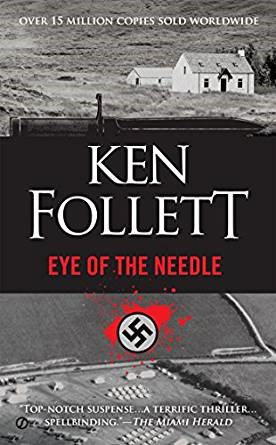
“Eye of the Needle was much better than anything I’d done before and that was partly because I’d planned and outlined it. I now think planning is really important, especially where suspense is an element. The story has always got to be turning. Once you’ve answered one question in the mind of the reader you must already be asking another question.” “Another problem, which I solved in Eye of the Needle, was pace. My books had always gone too fast. Eye of the Needle rattles along at a good speed.”
Follett explains how a writer can regulate the pace of a novel. “There is a simple rule that a story should turn every four to six pages.
“Look at Jane Austen; there’s a story turn about every six pages in her books and I think that is the pace people want. Faster than that and it’s too frenetic, any slower and they start to get bored.”
His writing routine tells its own story. The discipline needed to write such long books is enormous.
“It’s been pretty much the same for decades,” he says. “I like to start work quite early, more or less as soon as I wake up. I make tea and I’m usually at my desk by 7 o’clock when I do an hour or so. I like to do that because then whatever problems I’ve got I can think about when I’m doing mindless things like shaving and walking the dog and I can churn around what I’ll do after breakfast. I take a short break for lunch and then I usually work through until 4pm and after that do things like meetings, emails and so on.”
Ken believes that most of what we know as writers, we know before we even start to write, from reading lots of novels.
“Ninety percent of our knowledge about how to write a novel comes from reading novels,” he says. “When you start to write yourself, you realise there are some things you have not worked out by reading – but most of the things you have. When young members of my family occasionally announce their intention of being a novelist, my first question is always ‘How much do you read?’ If you get to the age of 20 without developing an enthusiasm for reading, then you are never going to be a real writer. I say that to people quite flatly. If they say they have read two or three books I say there is little chance for them. It’s like deciding you want to be a classical violinist at the age of 19. It’s too late.”
Planning, research and pace.
These three changes in emphasis turned Follett from an unsuccessful writer to a successful author. And he doesn’t want to stop learning.
“After Eye of the Needle I wanted to know if I could do it again. After Triple, well … Then The Key to Rebecca was a big success and I thought, yes, I can probably do this for the rest of my life. But I worry about the next book being as good as the last and whether public taste is changing. I don’t want to stand still. “I don’t want to repeat that format because people will get bored.”
Follett seems to challenge himself, each time, to take a subject he knows very little about, thoroughly research it and write the book a reader can’t put down.
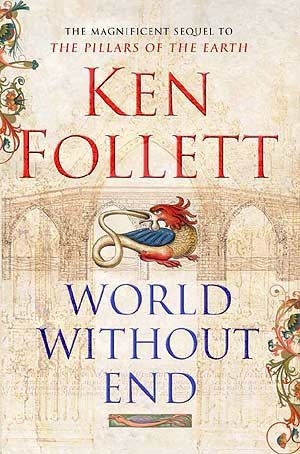
When he finishes a book, does he feel a bit lost, a bit bereft?
“No, I never feel like that. The first thing I feel is
relief : I can pay the rent for another couple of years. And then I start thinking about what to do next.”
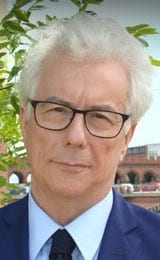
Most readers would consider Ken Follett highly successful. By mid-2017, more than 150 million copies of his books had been sold. Many have reached the New York Times Best Seller list, including Edge of Eternity, Fall of Giants, A Dangerous Fortune, Triple, The Key to Rebecca, Lie Down with Lions, Winter of the World, and World Without End.
Judith Spelman. Reproduced for educational purposes.





